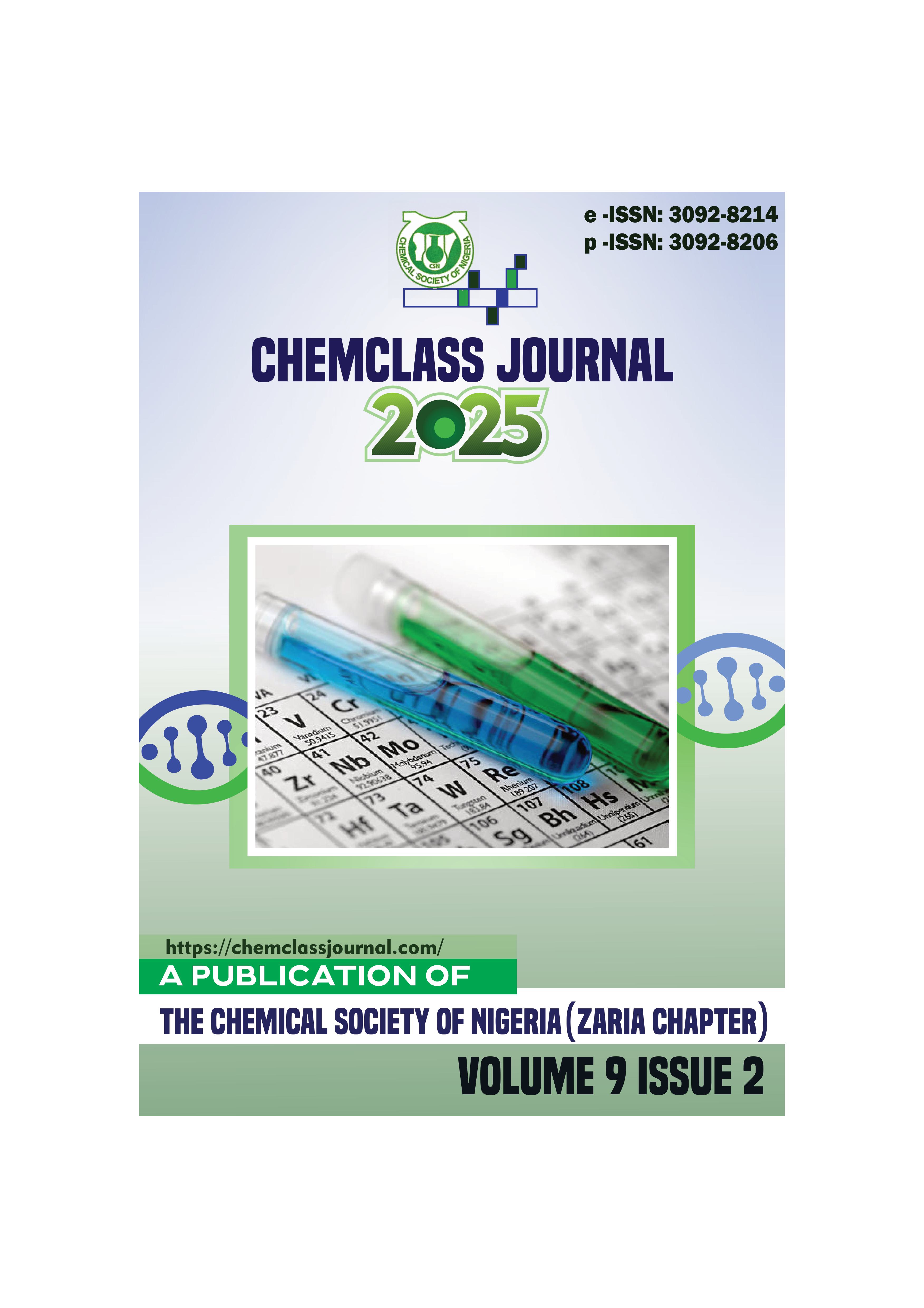Identification of Fatty acids, Carbohydrates and Organic acids in an Aqueous Extract of Red Watermelon (Citrullus lanatus) Rinds by UHPLC-Q Exactive HF Orbitrap
DOI:
https://doi.org/10.33003/chemclas-2025-0902/174Keywords:
Red watermelon , rinds , aqueous sample , negative ionization , precursor ions , MS/MS ions , decarboxylationAbstract
Watermelon is a Cucurbitaceae and a fruit that has great deal of medicinal and nutritional potency.
Watermelon is endowed with a lot of nutrients in different proportions such as glucose, fructose, amino
acids, fatty acids and vitamins. Supplementing watermelon juice in diet promotes vascular health and
World Health Organization (WHO) recommends the intake of the fruits for healthy living. The search for
more phytochemicals and nutrients in fruits is a continuous practice especially in the advent of more
sensitive spectroscopic equipment. In the current research, rind of commonly consumed red watermelon is
investigated for possible nutritional compounds using higher sensitive UHPLC in tandem with Q Exactive
HF Orbitrap. The findings revealed the putative occurrence of some carbohydrates (glucose, fructose and
galactose), short-chain fatty acids (6,11-dioxododecanoic acid and dihydroxypropoxy-9-oxononanoic acid)
and organic acids (citric acid, malic acid and azelaic acid). The results of the research could upgrade the
rinds of watermelon and may give rise to considerations on ways to utilize the rinds to serve better purposes
such as supplement for human diet or be made part of animal feed like chicken and fish.





 ChemClass Journal
ChemClass Journal
